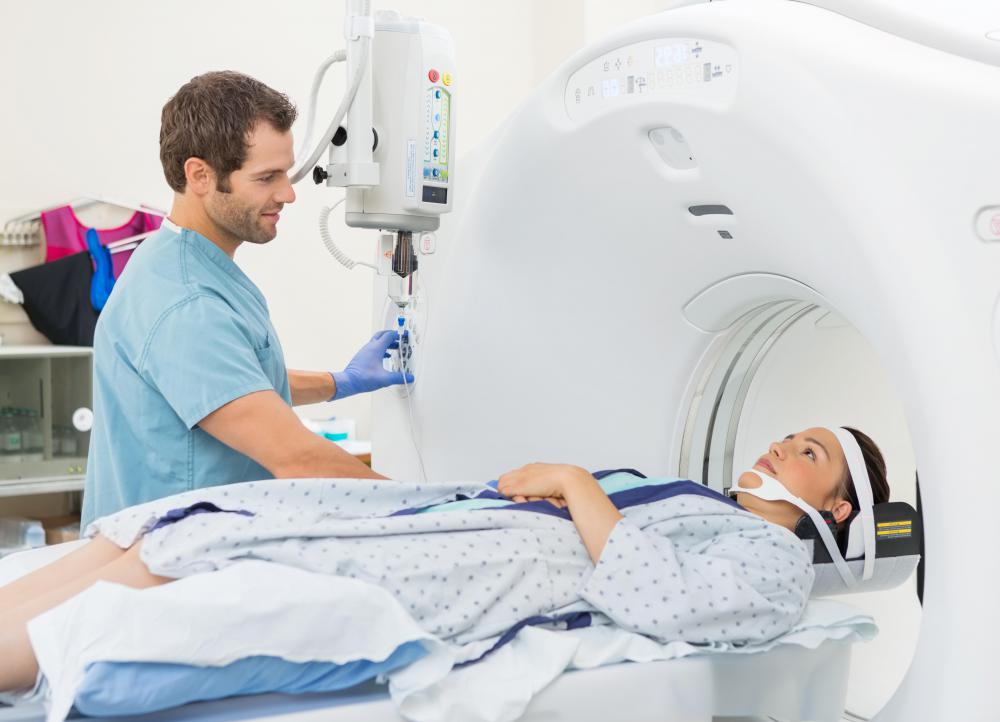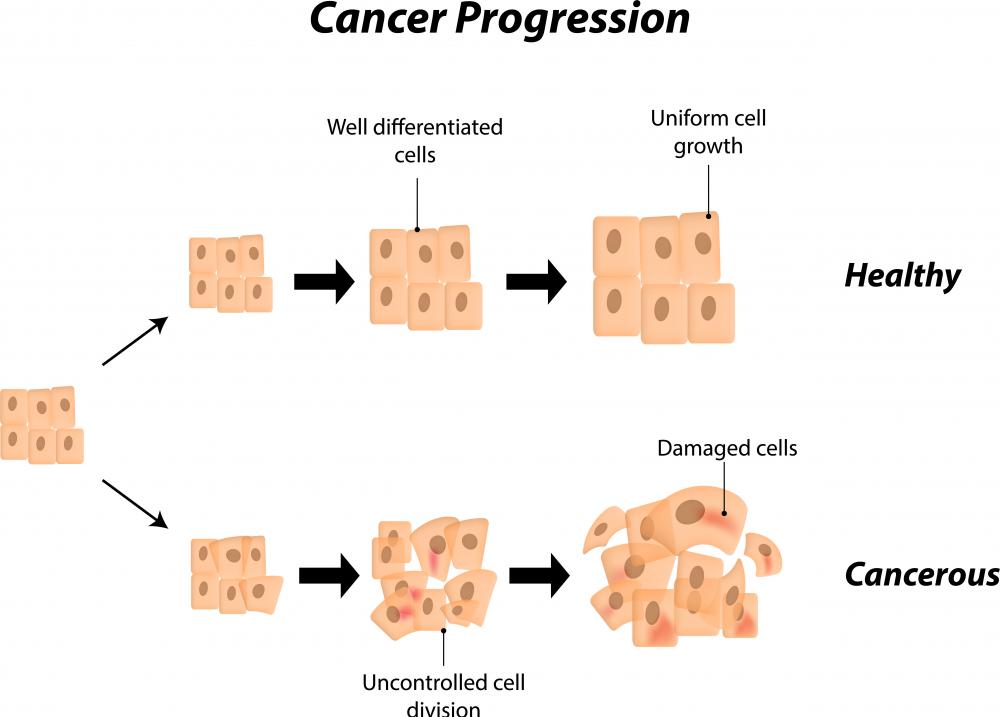At TheHealthBoard, we're committed to delivering accurate, trustworthy information. Our expert-authored content is rigorously fact-checked and sourced from credible authorities. Discover how we uphold the highest standards in providing you with reliable knowledge.
What are the Different Types of Cancer Scan?
Several types of medical imaging tests are used to diagnose cancers. These tests include x-ray magnetic resonance imaging, computer tomography, and positron emission tomography. Some of these can also help stage cancers, which means to evaluate how far the cancer has advanced in the body, and whether it has metastasized. Each type of cancer scan uses slightly different technology and produces results of differing accuracy and detail. Often two of these cancer tests are carried out at the same time, as some scans have a synergistic effect when used together.
The x-ray is the most basic test which can function as a cancer scan. While x-ray is a useful diagnostic tool, however, it is not detailed enough for an accurate diagnosis and is not used to stage cancer. X-ray is one of the first diagnostic imaging tests which may be used to diagnose cancer, but is almost always followed by at least one more diagnostic scan.

Computer tomography, also referred to as a CT scan, uses x-ray technology but uses additional equipment to take x-rays from multiple different angles simultaneously. This type of cancer scan can generate three-dimensional images of the interior of the body, and is a much more useful diagnostic tool than a single x-ray. The main drawback of the CT scan is that the images generated are low-contrast. To help correct this issue, a person who is undergoing a CT scan may receive an intravenous injection of contrast dye so that the scanner can produce more detailed images.

Magnetic resonance imaging scans, commonly called MRI scans, generate images of the body by using electromagnetic radiation. An MRI scan can produce images in much greater detail than a CT scan, with the added advantage that the MRI can generate high-contrast images without the need for intravenous dye injections.
The positron emission tomography scan, or PET scan, is the most effective cancer scan in use for detecting and staging cancer. Unlike any other type of cancer scan, the PET scan relies on metabolic differences between malignant and non-malignant cells to detect cancer in the body. This characteristic of the PET scan means this particular test is more detailed and more accurate than any other for diagnosing cancer.

Combining a PET scan with either a CT scan or MRI scan allows for even more accurate and detailed results that can provide an accurate cancer prognosis. Information about the location, size, and metabolic activity of a tumor is crucial, as it influences the type of treatment a patient can receive. These combination scans are also very useful for determining how well a patient responds to a particular treatment after it has been carried out.
AS FEATURED ON:
AS FEATURED ON:


















Discuss this Article
Post your comments